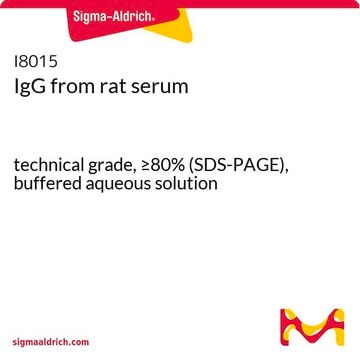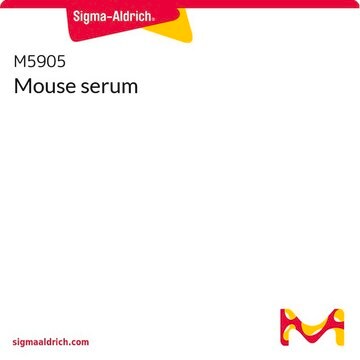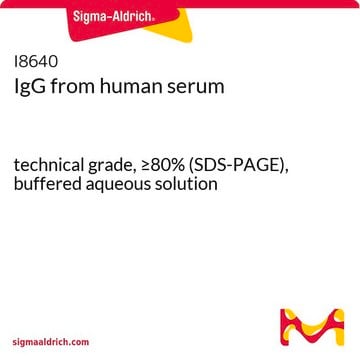I9140
IgG from goat serum
technical grade, ≥80% (SDS-PAGE), buffered aqueous solution
Sinónimos:
Goat IgG
Seleccione un Tamaño
Seleccione un Tamaño
About This Item
Productos recomendados
conjugado
unconjugated
Nivel de calidad
grado
technical grade
Ensayo
≥80% (SDS-PAGE)
Formulario
buffered aqueous solution
técnicas
ChIP: suitable
immunohistochemistry: suitable
Condiciones de envío
dry ice
temp. de almacenamiento
−20°C
¿Está buscando productos similares? Visita Guía de comparación de productos
Categorías relacionadas
Descripción general
Goat IgG is purified from normal goat serum by fractionation.
Aplicación
Forma física
Cláusula de descargo de responsabilidad
Código de clase de almacenamiento
10 - Combustible liquids
Clase de riesgo para el agua (WGK)
WGK 3
Punto de inflamabilidad (°F)
Not applicable
Punto de inflamabilidad (°C)
Not applicable
Equipo de protección personal
Eyeshields, Gloves, multi-purpose combination respirator cartridge (US)
Elija entre una de las versiones más recientes:
Certificados de análisis (COA)
¿No ve la versión correcta?
Si necesita una versión concreta, puede buscar un certificado específico por el número de lote.
¿Ya tiene este producto?
Encuentre la documentación para los productos que ha comprado recientemente en la Biblioteca de documentos.
Los clientes también vieron
Active Filters
Nuestro equipo de científicos tiene experiencia en todas las áreas de investigación: Ciencias de la vida, Ciencia de los materiales, Síntesis química, Cromatografía, Analítica y muchas otras.
Póngase en contacto con el Servicio técnico













